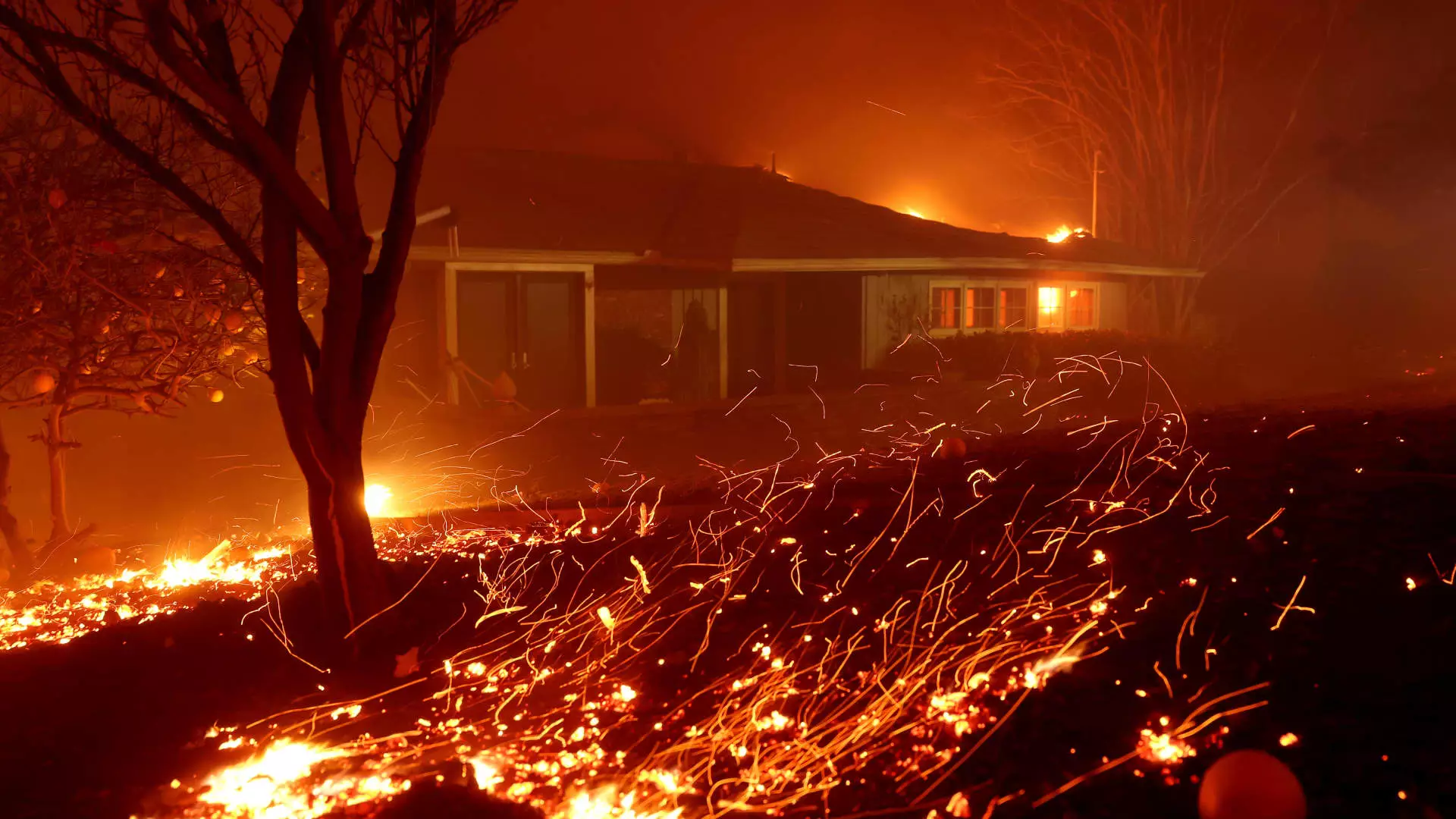As we witness the devastating wildfires ravaging Los Angeles, a pressing concern emerges: the impact on insurance costs and the broader implications for real estate values across the nation. While the immediate monetary toll is still being assessed, experts project that the repercussions will resonate far beyond California’s borders. The emerging data presents a sobering reality: insurance rates are expected to rise significantly, affecting home pricing in a way that could reshape the American real estate landscape. The correlation between climate risk and diminishing property values may not seem apparent at first, but a closer examination reveals just how intertwined these challenges have become, raising the urgency of acknowledging climate change as a critical financial risk.
According to a stark analysis from climate risk firm First Street, projections indicate that by 2055, as many as 84% of U.S. homes could see a decline in value, amounting to losses close to $1.47 trillion. Jeremy Porter, who leads research on climate implications at First Street, emphasizes that climate change is a tangible and quantifiable threat reshaping not only real estate markets but also regional economies. Nationally, average property values may dip by approximately 3%, while certain regions, specifically in Texas, Florida, and Louisiana, could experience extreme reductions—potentially halving home values. These trends raise crucial questions for investors and homeowners alike about the viability of real estate as a sound investment in the decade ahead.
Mounting Risks and Rising Insurance Costs
Dave Burt, founder of DeltaTerra Capital, highlights the precarious nature of the insurance sector amidst escalating climate-related disasters. With the market facing severe strain, experts foresee nationwide hikes in insurance costs—estimates suggest an average increase of 25% over the next 30 years. This rise comprises 14% attributed to the current undervaluation of climate risk and the added 11% related to worsening climate conditions. As Burt cautions, the fragility of the insurance system is reaching a critical threshold, endangering both coverage availability and affordability. Housing markets that have historically boasted robust values could soon witness drastic corrections analogous to the economic fallout observed during the 2008 financial crisis.
Shifting Perceptions and Mortgage Challenges
The ongoing discourse surrounding climate risk is increasingly penetrating the mortgage sector. Notably, Fannie Mae is beginning to scrutinize climate factors affecting its underwriting processes. Tim Judge, the chief climate officer at Fannie Mae, acknowledged that climate change consequences may not reflect in current market pricing, leaving consumers unaware of looming insurance premiums. As awareness grows, constituencies may encounter potentially perilous situations where mortgages become unobtainable amid skyrocketing insurance costs and diminishing property values—a precursor to broader economic instability.
The relationship between environmental disasters and subsequent economic turmoil is hardly novel. Historical data illustrates a clear pattern: following Hurricane Sandy in 2012, foreclosures in impacted regions surged by 46%, with an even more significant 144% spike after the floods in Ames, Iowa in 2008. These figures paint a vivid picture—a market that is already strained may soon buckle under the weight of climatic adversities, prompting lenders and investors to reconsider their positions. The insights provided by experts like Ben Keys of the University of Pennsylvania underscore that, ultimately, the housing market will need to achieve a new equilibrium as it contends with the escalating costs associated with climate disasters.
Insurance as a Catalyst for Real Estate Decline
Rising insurance prices will undoubtedly play a pivotal role in driving down home values across the nation; however, they are not the sole factor. Communities inclined to invest in resilience may impose higher taxes, and homeowners may face escalated maintenance and energy costs. This multifaceted economic stress could dissuade potential buyers, significantly altering the landscape where real estate portfolios were once seen as secure investments. The contradiction of federal responses, such as the Trump administration’s move to halt the Federal Flood Risk Management Standard, brings further uncertainty to how infrastructure will cope in the face of mounting climate challenges.
The looming threat posed by climate change and its impact on real estate represents a multifaceted crisis requiring immediate attention and proactive measures. Stakeholders need to recognize that climate risk is intricately woven into the fabric of economic stability. As we brace for escalating insurance costs and their repercussions on property values, both homeowners and investors must adapt their strategies to navigate this evolving landscape marked by uncertainty and risk. Recognizing the interplay between environmental disasters, economic health, and housing stability is crucial in preparing for the unpredictability that lies ahead. The emphasis must be placed not just on addressing the symptoms of the crisis but also on developing sustainable solutions that will anchor the real estate market for years to come.

